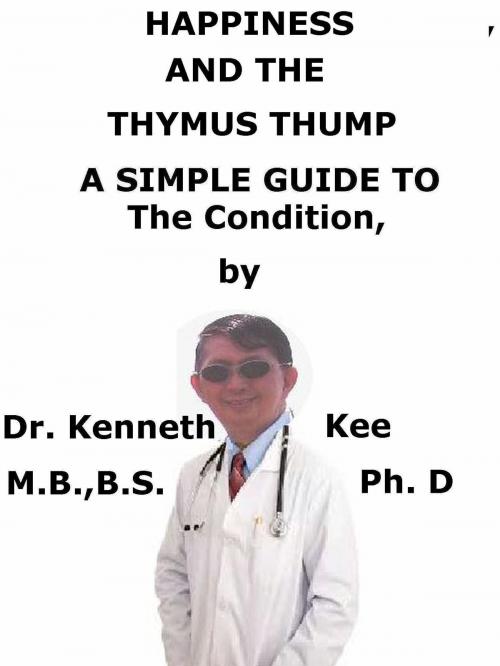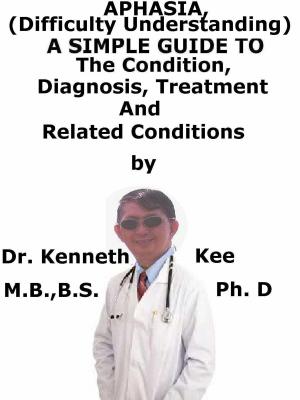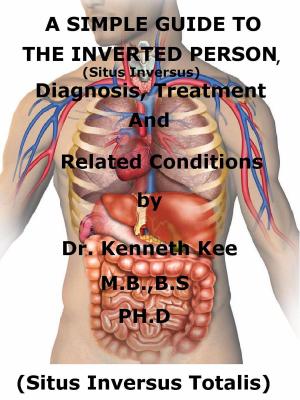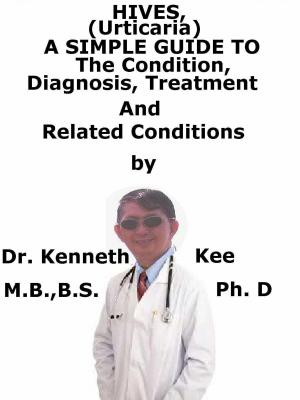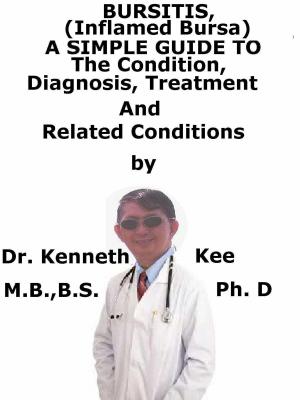Happiness And The Thymus Thump A Simple Guide to The Condition
Nonfiction, Health & Well Being, Medical, Medical Science, Immunology, Specialties, Internal Medicine, Endocrinology & Metabolism| Author: | Kenneth Kee | ISBN: | 9781370788644 |
| Publisher: | Kenneth Kee | Publication: | October 20, 2016 |
| Imprint: | Smashwords Edition | Language: | English |
| Author: | Kenneth Kee |
| ISBN: | 9781370788644 |
| Publisher: | Kenneth Kee |
| Publication: | October 20, 2016 |
| Imprint: | Smashwords Edition |
| Language: | English |
The Thymus Thump
If you have never heard of the Thymus Thump, now is the time to think of Tarzan and his chest thumping.
During times of extreme stress, think of your need to grasp or rub mid-chest or Tarzan who pounds his chest before entering a battle.
Both situations call for stimulation of the thymus gland.
The thymus thump is a widely used practice with those who practice energy work.
One of the functions is to release fear.
These three ideas together makes a logical argument why Tarzan would thump his chest before going into battle – release of fear before engaging in battle, increased energy, and preparation of the immune system to deal with injuries
The Thymus Thump (also known as the happiness point) can assist to neutralize negative energy, exude calm, revamp energy, support healing and vibrant health, and boost the immune system.
A simple but very effective energy technique involves tapping, thumping or scratching on the thymus point.
The word thymus comes from the Greek word ‘thymos’ which means “life energy.”
The thymus gland lies just beneath the upper part of the breastbone in the middle of the chest.
Its role is in keeping the own life energy vibrating in high frequency.
When the thymus gland is in harmony, it can increase the strength and vitality.
Therefore when there is an imbalance in energy flow, the Thymus Thump can help correct it.
The thymus gland is linked between the mind and the body thus when there is emotional or physical disturbance can cause the thymus gland to shrink and cause depletion in this vital life energy.
The Thymus Thump:
1. Take a couple of deep, relaxing breaths.
2. Using the fingertips or side of the fist, tap up and down about 2-3 inches along the sternum, between and above the mammary glands.
The thymus is located behind the third rib, but any vibrations along the length of the upper sternum will stimulate it.
3. Do this for 15-20 seconds and continue to take regular slow breaths.
4. Do 1-3 times a day or up to 4 during times of acute illness.
You may thump in the middle of the chest with the fist (think Tarzan) where the thymus is located.
Or, you may want to rub softly or firmly or scratch with four fingers of the hand.
Do this for about 20 seconds and breathe deeply in and out.
You will know when you have activated the thymus gland as you will feel a little tingling or a subtle feeling of ‘joy’ or ‘happiness.’
Another hint is to do three thumps at a time but emphasize the first thump more firmly.
For some people it may take a little time before you ‘feel’ anything.
Persevere and you will get it and well worth it.
Do this every day to ensure the life energy and thymus gland is activated but do several times a day if you are suffering from anxiety, panic attacks or stress and allows the life energy to come alive.
The thymus gland, located at the breast bone, performs some key health-enhancing functions, including producing white blood cells that help fight infections.
Boost your thymus by “thumping” 10 to 12 times on your chest firmly, but don’t overdo it.
You will increase your white blood cell count significantly, moving them out into the bloodstream, where they can do their work.
So, go ahead and thump away like Tarzan and you will be sure to stay in the swing of things!
TABLE OF CONTENT
Introduction
Chapter 1 Thymus Thump
Chapter 2 Interesting Facts about Thymus Gland and Thump
Chapter 3 The Thymus Gland
Chapter 4 Happiness
Chapter 5 Positive Happiness
Chapter 6 Don’t Worry Be Happy
Chapter 7 Happiness is within us
Chapter 8 Happiness is just a word
Chapter 9 Love make the Home the Happiest Place to Live in
Epilogue
The Thymus Thump
If you have never heard of the Thymus Thump, now is the time to think of Tarzan and his chest thumping.
During times of extreme stress, think of your need to grasp or rub mid-chest or Tarzan who pounds his chest before entering a battle.
Both situations call for stimulation of the thymus gland.
The thymus thump is a widely used practice with those who practice energy work.
One of the functions is to release fear.
These three ideas together makes a logical argument why Tarzan would thump his chest before going into battle – release of fear before engaging in battle, increased energy, and preparation of the immune system to deal with injuries
The Thymus Thump (also known as the happiness point) can assist to neutralize negative energy, exude calm, revamp energy, support healing and vibrant health, and boost the immune system.
A simple but very effective energy technique involves tapping, thumping or scratching on the thymus point.
The word thymus comes from the Greek word ‘thymos’ which means “life energy.”
The thymus gland lies just beneath the upper part of the breastbone in the middle of the chest.
Its role is in keeping the own life energy vibrating in high frequency.
When the thymus gland is in harmony, it can increase the strength and vitality.
Therefore when there is an imbalance in energy flow, the Thymus Thump can help correct it.
The thymus gland is linked between the mind and the body thus when there is emotional or physical disturbance can cause the thymus gland to shrink and cause depletion in this vital life energy.
The Thymus Thump:
1. Take a couple of deep, relaxing breaths.
2. Using the fingertips or side of the fist, tap up and down about 2-3 inches along the sternum, between and above the mammary glands.
The thymus is located behind the third rib, but any vibrations along the length of the upper sternum will stimulate it.
3. Do this for 15-20 seconds and continue to take regular slow breaths.
4. Do 1-3 times a day or up to 4 during times of acute illness.
You may thump in the middle of the chest with the fist (think Tarzan) where the thymus is located.
Or, you may want to rub softly or firmly or scratch with four fingers of the hand.
Do this for about 20 seconds and breathe deeply in and out.
You will know when you have activated the thymus gland as you will feel a little tingling or a subtle feeling of ‘joy’ or ‘happiness.’
Another hint is to do three thumps at a time but emphasize the first thump more firmly.
For some people it may take a little time before you ‘feel’ anything.
Persevere and you will get it and well worth it.
Do this every day to ensure the life energy and thymus gland is activated but do several times a day if you are suffering from anxiety, panic attacks or stress and allows the life energy to come alive.
The thymus gland, located at the breast bone, performs some key health-enhancing functions, including producing white blood cells that help fight infections.
Boost your thymus by “thumping” 10 to 12 times on your chest firmly, but don’t overdo it.
You will increase your white blood cell count significantly, moving them out into the bloodstream, where they can do their work.
So, go ahead and thump away like Tarzan and you will be sure to stay in the swing of things!
TABLE OF CONTENT
Introduction
Chapter 1 Thymus Thump
Chapter 2 Interesting Facts about Thymus Gland and Thump
Chapter 3 The Thymus Gland
Chapter 4 Happiness
Chapter 5 Positive Happiness
Chapter 6 Don’t Worry Be Happy
Chapter 7 Happiness is within us
Chapter 8 Happiness is just a word
Chapter 9 Love make the Home the Happiest Place to Live in
Epilogue
